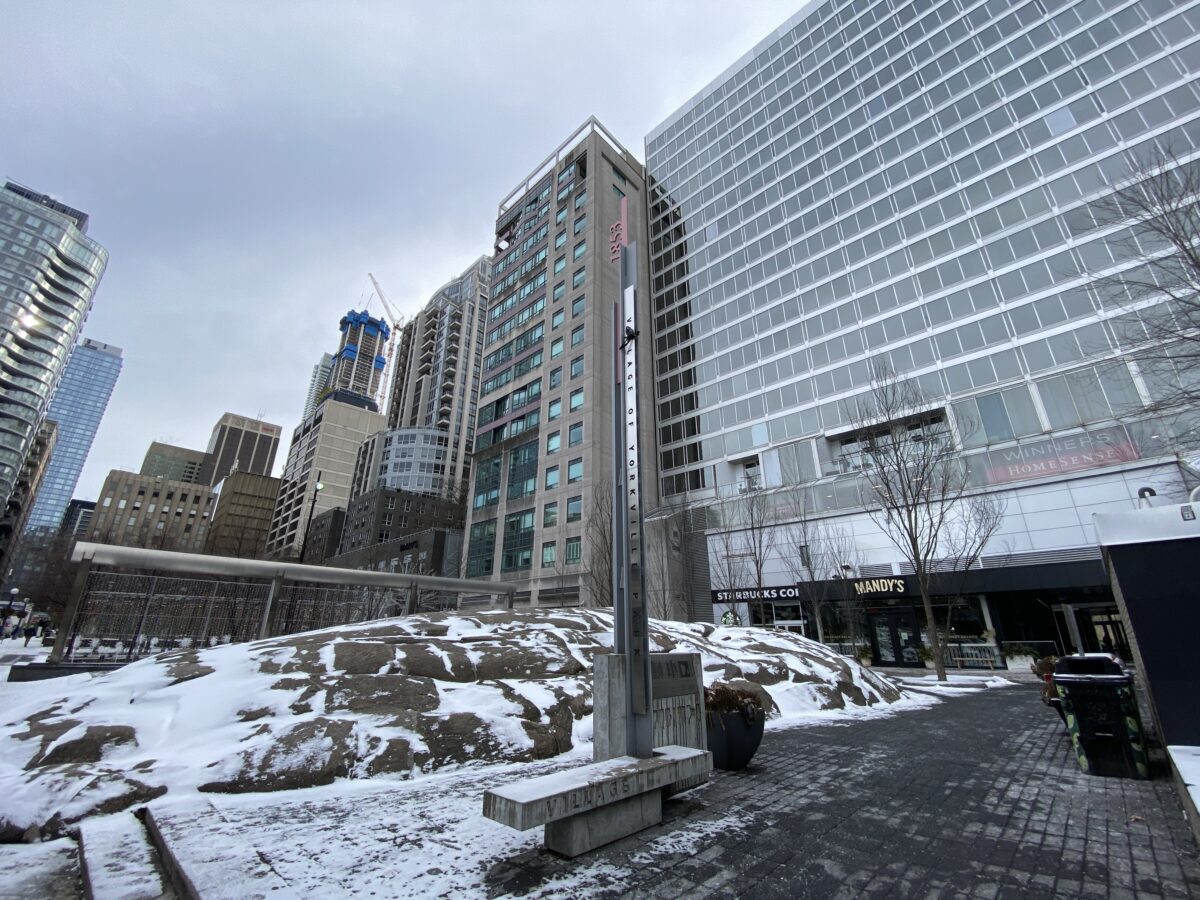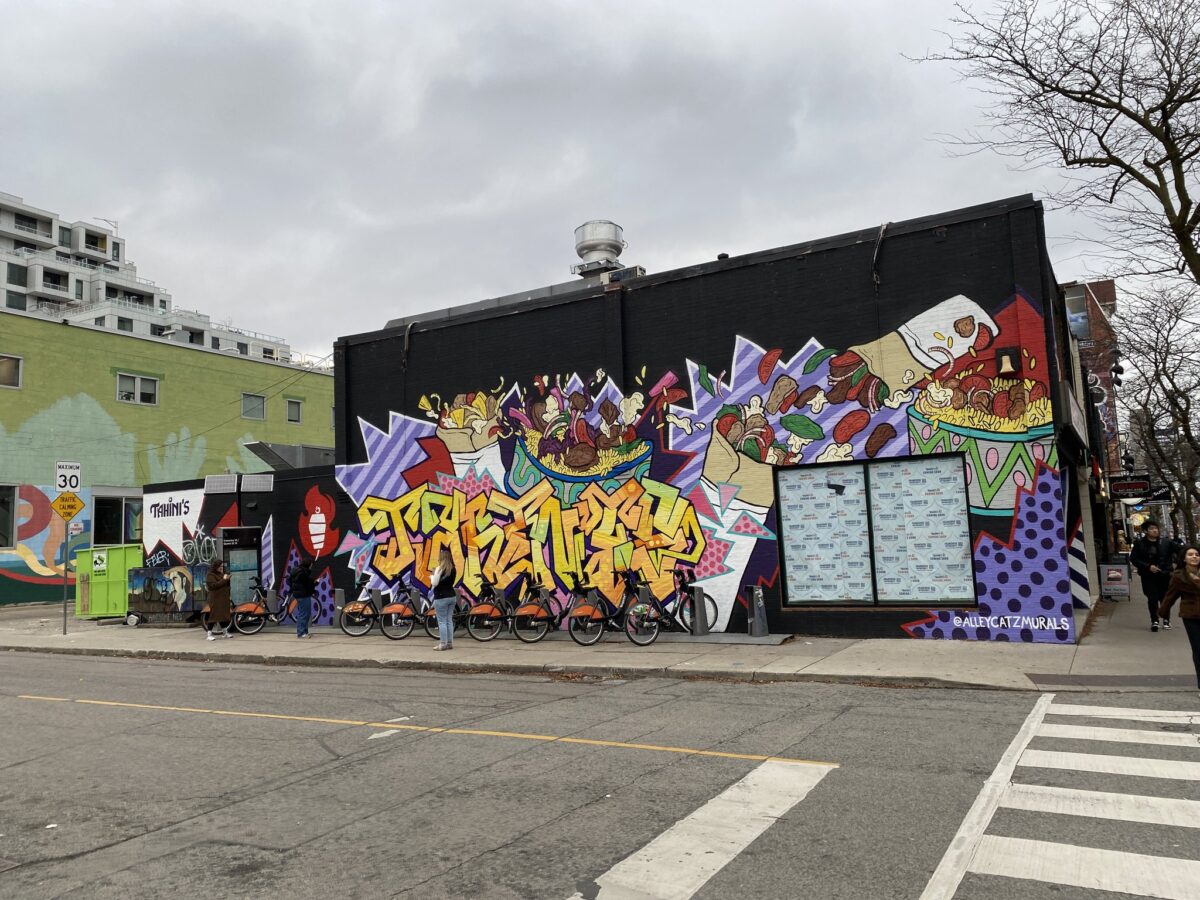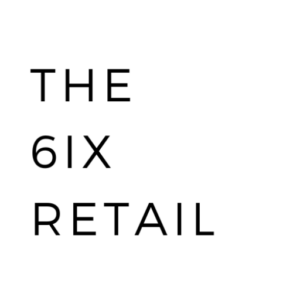The retail landscape in downtown Toronto has shifted dramatically post-pandemic. What made a location successful in 2019 doesn’t necessarily hold up today. It’s no longer just about foot traffic—it’s about how a retail space fits into the way people shop, live, and interact with brands in this new era.
Success in retail today is all about integration. Consumers don’t just walk into stores to buy things anymore; they want experiences. Whether it’s interactive retail spaces, in-store events, or hybrid models blending shopping with entertainment, the brands that offer customers a reason to visit beyond the transaction are the ones thriving. Meanwhile, e-commerce isn’t going anywhere, so brick-and-mortar retailers that seamlessly integrate online shopping—offering click-and-collect, easy returns, and micro-fulfillment—are setting themselves apart. If a retailer isn’t thinking about omnichannel convenience, they’re already falling behind.
Foot traffic still matters, but it looks different now. The return-to-office movement has been inconsistent, with many companies adopting hybrid models instead of full-time office mandates. As a result, areas that once depended heavily on office workers—such as the Financial District—haven’t fully bounced back. Instead, mixed-use developments, transit-friendly locations, and neighborhoods with a strong residential presence are now driving retail success.
Destinations like The Well, Union Station, and Yorkville—where people live, work, and spend their leisure time—are proving to be prime retail hubs. These areas provide a built-in customer base by combining residential, office, and entertainment spaces, ensuring foot traffic throughout the entire day, not just during business hours. That’s why new developments like 1 Yonge Street, 1 Bloor West, CIBC Square, and Cloverdale Mall are attracting so much attention. They offer retailers a chance to secure space in locations built for the future of shopping.

Beyond just selecting the right location, successful retailers understand that community engagement and customer experience matter more than ever. Consumers expect a seamless, consistent brand experience both online and in-store, and exceptional customer service has become a make-or-break factor.
Businesses that actively engage with their communities—by joining the Chamber of Commerce, sponsoring local sports teams, and reinvesting in the neighborhood—are earning long-term loyalty. Shoppers are drawn to brands that show they care about where they operate, and that connection translates into repeat business. Retailers who show up at local events, emphasize sustainability, and build genuine relationships with their customers are positioning themselves for long-term success.
Landlords are also adapting to this shift. Those offering flexible lease terms, pop-up opportunities, and adaptable spaces are attracting the best brands. Economic uncertainty remains a factor, so short-term leasing, shared retail spaces, and percentage-based rent agreements are becoming more common, allowing retailers to test new markets before making long-term commitments.
Retail success isn’t just about what happens inside the store—it’s also about how easily products get in and out. The pandemic accelerated demand for delivery and takeout, and that shift isn’t slowing down.

For quick-service restaurants (QSRs), delivery now accounts for an average of 30% of sales across the entire market. Retail locations that don’t accommodate delivery drivers efficiently are leaving money on the table. This is especially evident in places like the PATH food courts, where logistical challenges make it difficult to capitalize on the growing delivery market. Meanwhile, office lunch traffic—once a steady source of revenue—is still operating at reduced levels. The PATH, for example, now functions more like a three-day-a-week economy, with peak foot traffic from Tuesday to Thursday, while Mondays and Fridays remain relatively quiet. While return-to-office trends are improving, Colliers predicts a full return to office won’t happen until late 2025 or early 2026.
Another major shift? Spending habits. Inflation has forced many consumers to rethink their shopping priorities, leading to a polarized market. Some shoppers are willing to splurge on premium products, while others are hunting for value-driven options. As a result, luxury brands in Yorkville are thriving, while discount retailers like Winners and Dollarama continue expanding. The retailers caught in the middle—those neither high-end nor budget-friendly—are struggling to maintain their market position.
At the same time, food and beverage has emerged as a major driver of foot traffic. Retail locations near high-end grocery stores, trendy cafés, or experiential dining spots enjoy a built-in customer base. Dining is now an essential part of the retail experience, whether through standalone restaurants, food halls, or integrated café concepts inside larger retail spaces. The best retail locations recognize this trend and embrace the synergy between shopping and dining.
The old rules of retail real estate no longer apply. A successful retail location today isn’t just about securing space in a high-traffic area—it’s about being part of an ecosystem that reflects how people actually shop, live, and spend their time. Retailers need to do their homework and find out exactly where they fit within that ecosystem.
But finding the right space is only half the battle. Lease terms must still be sustainable, and tenants need to negotiate provisions that protect against potential risks. Anchor tenants can come and go, and when a major retailer or department store exits, it can send shockwaves through an entire shopping center. Smart retailers and landlords are building contingencies into their agreements to safeguard against these disruptions.
Retail is no longer just about location—it’s about adaptation. It’s about recognizing that consumer behavior has changed, foot traffic has evolved, and shopping is now a hybrid experience that requires flexibility, community engagement, and logistical efficiency. Businesses that understand this, adapt quickly, and build resilience into their strategy will continue to thrive in Toronto’s ever-evolving retail market. The retailers that don’t? They’ll get left behind. The future belongs to those who recognize that retail is an ecosystem, and like any ecosystem, it only works when every part of it is functioning at its best.

Shawn Saraga, also known as Mr.Franchise, is a franchise consultant who provides industry-specific content and motivational speaking for franchise shows, franchise conventions, and more. With over 20 years of experience in the franchise industry, Shawn has successfully opened over 1000 franchise businesses and executed over 750 leases in his career. A published columnist in several major franchise and real estate publications, Shawn is recognized globally as a Canadian franchise expert. Additionally, Shawn offers franchise consulting services for new and emerging brands prior to fully engaging them under The Franchise Academy.
- Founder – The Franchise Academy
- Broker – Revel Realty
- Chief Development Officer – Tahini’s Restaurants
- Advisory Board Member – StoriedLife
- Board Member – Leadership Sinai
